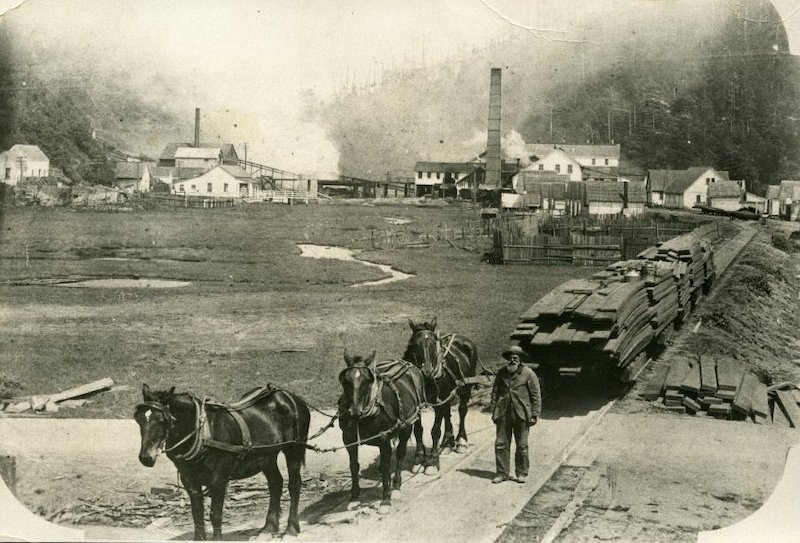Napoleon Bonaparte Bever & Horse Team, c. 1902. Photograph of Napoleon Bonaparte Bever with a three-horse team hauling lumber-filled railroad cars from the Mendocino Lumber Mill located on Big River Flat to the Incline where the cars would be pulled up the bluff and out to the Shipping Point.

Behind Mr. Bever is the mill and its associated buildings, including the ninety-foot high, million-brick chimney that would later collapse in the 1906 earthquake. On the far left of the image is a dwelling, and then to its right is the cookhouse with its storage sheds. Workers’ cabins are visible to the left of the tramway, while on the other side of the track are the carpentry and blacksmith shops that serviced the mill, which is the largest structure in the background.
The building with a tall round chimney in the background on the left is probably Mendocino’s short-lived electric plant. From 1902 until about 1907, the town had its own General Electric dynamo, powered by steam boilers that were fueled by sawdust delivered on one of the elevated conveyor structures visible here. Note the power poles running along the left side of the photo. The plant generated up to 120-kilowatts and powered 1,300 lights via 5.5 miles of electrical wire throughout the town. The Mendocino lighting plant was shut down on November 16, 1907, after the town began receiving electricity from the Fort Bragg Electric Light Company.
Join Kelley House President Sarah Nathe at 10 am on June 3 at the Matheson Performing Arts Center in Mendocino for the Mendocino Film Festival’s presentation of “Three Minutes: A Lengthening.” Director Bianca Stigter identifies the people in a three-minute reel of faded 16mm color home movie footage shot in 1938 in the Jewish quarter of Nasielsk, and explores the Jewish neighborhood and details of daily life there that often get neglected in historical accounts. Sarah will give a short introduction and discuss the importance of preserving historical artifacts.